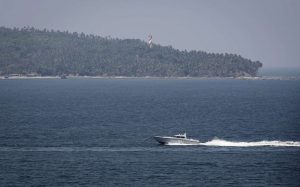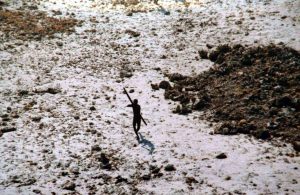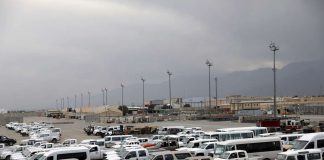SEPTEMBER 2, 2020

At least 10 people from the Great Andamanese tribe have tested positive for COVID-19 as of Friday and were being monitored in hospital, according to Anvita Abbi, a New Delhi-based linguist and social scientist who in contact with the community.
“It is spreading like fire,” Abbi told NBC News by phone. “What I gathered from them was that none of them had really serious symptoms. In fact, they all seem to be asymptomatic.”
Those who are appearing to be ill are younger — in their late teens in some cases — and live in the archipelago’s largest city of Port Blair, she said. But concerns are rising over the possible exposure of the tribe’s elders who live on remote Strait Island, which has some contact with the general population.
At least 3,160 people have tested positive for the virus across the Andaman and Nicobar Islands, according to local officials. Located southeast of Myanmar in the Bay of Bengal, they have a combined population of more than 400,000,
Cases are on the rise with 28 more cases confirmed on Tuesday. Forty-six people there have died during the pandemic so far.
Dr. Avijit Roy, who is leading the fight against the outbreak in the islands, told Reuters last week that tests given to the Great Andamanese living on one of the coral-reef islands confirmed four men were positive.
“They have been moved to hospital,” Roy said. Officials believe the men may have traveled to the main Andaman islands and caught the disease.
India’s Ministry of Health and Tribal Affairs Ministry did not respond to multiple requests for comment.
Survival International, a British-based charity advocating indigenous rights worldwide, also said it received reports that at least five people among the Great Andamanese were infected.
“It’s a huge concern because they’re so vulnerable, they’ve got so many already existing health problems,” said Sophie Grig, a senior researcher for Survival International.
The tribe’s population has significantly dwindled from an estimated 5,000 people when the British colonists arrived in the 1850s, said Grig. Exposure to new illnesses such as influenza, measles and syphilis that came with colonization decimated their numbers.
The community continues to struggle with cases of tuberculosis, she added.
“They’ve already lost so much as a community,” she said.
The tribe along with their ancient language and culture are at risk, and losing them means losing a window into human history, Abbi said.
“They represent one of the most ancient civilizations,” she said.
The ancestors of the Great Andamanese traveled from Africa to settle off the Indian coast some 70,000 years ago, Abbi said. Other tribes in the archipelago have similar ancient roots, and unlike the Great Andamanese, they are not integrated.

Image: A Sentinel tribal man aims with his bow and arrow at an Indian Coast Guard helicopter as it flies over their island for survey in India’s Andaman and Nicobar archipelago. (Indian Coast Guard / AP file)
The nomadic Jarawa tribe of an estimated 400 people live relatively isolated in forests. But they risk being exposed to the virus by poachers, travelers and even welfare workers encroaching on their territory, according to Survival.
Despite being among the most isolated tribes in the world, the uncontacted Sentinelese are also at risk of exposure by poachers fishing off their remote island of North Sentinel. Survival International is calling for strict protections to ensure outsiders remain away from their territory — which linguist Abbi agreed with.
“The best thing is to leave them alone,” she said.
There’s no evidence yet to suggest any ethnic group is at greater risk of complications from the coronavirus because of a lack of immunity since the virus is new to all humans, said Dr. Jehan El-Bayoumi, founding director of the Rodham Institute at the George Washington University.
But other social and economic factors — such as nutrition, access to healthcare and poverty — do increase the risk of complications in indigenous and minority communities, El-Bayoumi said.
In the United State, Native Americans are the group at the highest risk of death from the virus, she added.
Similar concerns can be seen around the world from increasing infections among indigenous groups in Brazil to starvation due to the pandemic’s disruption on food supplies for indigenous communities in Bangladesh, according to the Unrepresented Nations and Peoples Organization.
What’s needed is better adherence to public health guidance as well as more representation from indigenous communities at all levels of government, so they can advocate for their needs, said Ralph Bunche, general secretary of the organization.
“All too often, indigenous communities are suffering from greater impacts from things like coronavirus,” Bunche said. “It’s just showing to a greater extent these imbalances that have had already existed.”
Courtesy/Source: NBC News










































































































